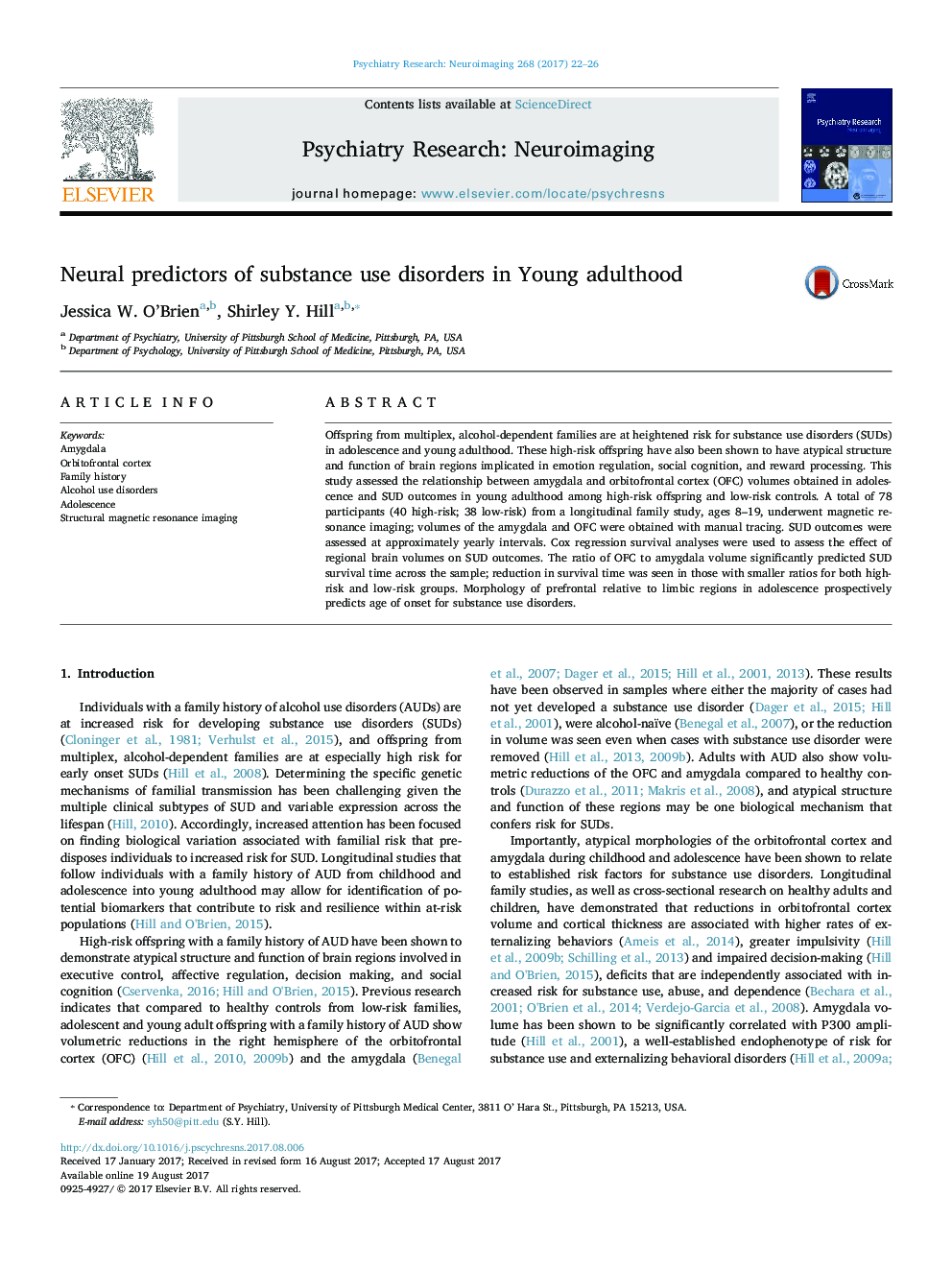| کد مقاله | کد نشریه | سال انتشار | مقاله انگلیسی | نسخه تمام متن |
|---|---|---|---|---|
| 4933886 | 1433885 | 2017 | 5 صفحه PDF | دانلود رایگان |
عنوان انگلیسی مقاله ISI
Neural predictors of substance use disorders in Young adulthood
ترجمه فارسی عنوان
عاملی پیشگیری از اختلالات مصرف مواد در بزرگسالان جوان
دانلود مقاله + سفارش ترجمه
دانلود مقاله ISI انگلیسی
رایگان برای ایرانیان
کلمات کلیدی
آمیگدالا، قشر اوربیتوفرنتال، سابقه خانوادگی، اختلالات مصرف الکل، بلوغ، تصویربرداری رزونانس مغناطیسی ساختاری،
موضوعات مرتبط
علوم زیستی و بیوفناوری
علم عصب شناسی
روانپزشکی بیولوژیکی
چکیده انگلیسی
Offspring from multiplex, alcohol-dependent families are at heightened risk for substance use disorders (SUDs) in adolescence and young adulthood. These high-risk offspring have also been shown to have atypical structure and function of brain regions implicated in emotion regulation, social cognition, and reward processing. This study assessed the relationship between amygdala and orbitofrontal cortex (OFC) volumes obtained in adolescence and SUD outcomes in young adulthood among high-risk offspring and low-risk controls. A total of 78 participants (40 high-risk; 38 low-risk) from a longitudinal family study, ages 8-19, underwent magnetic resonance imaging; volumes of the amygdala and OFC were obtained with manual tracing. SUD outcomes were assessed at approximately yearly intervals. Cox regression survival analyses were used to assess the effect of regional brain volumes on SUD outcomes. The ratio of OFC to amygdala volume significantly predicted SUD survival time across the sample; reduction in survival time was seen in those with smaller ratios for both high-risk and low-risk groups. Morphology of prefrontal relative to limbic regions in adolescence prospectively predicts age of onset for substance use disorders.
ناشر
Database: Elsevier - ScienceDirect (ساینس دایرکت)
Journal: Psychiatry Research: Neuroimaging - Volume 268, 30 October 2017, Pages 22-26
Journal: Psychiatry Research: Neuroimaging - Volume 268, 30 October 2017, Pages 22-26
نویسندگان
Jessica W. O'Brien, Shirley Y. Hill,
